The Wheat Penny represents the third series of U.S. Small Cents, following the Flying Eagle and Indian Head cents. Unlike the earlier Large Cents that measured 28.5mm, these smaller cents were reduced to 19.05mm in diameter—mainly due to rising copper costs during the gold rush of the 1850s.
Now, if you’re curious about the value of a 1953 Wheat Penny, here’s a breakdown based on mint mark, condition, and rarity:
1953 Wheat Penny Value Overview (Red Specimens)
| Coin Type | MS64+ RD | MS65+ RD | MS66+ RD | MS67 RD | MS67+ RD | MS68 RD | PF67+ DCAM |
|---|---|---|---|---|---|---|---|
| 1953-D (Denver) | $16 | $26 | $95 | $800 | $6,750 | – | – |
| 1953-S (San Francisco) | $16 | $24 | $46 | $225 | $1,300 | $19,500 | – |
| 1953 No Mint Mark (Philadelphia) | $22 | $36 | $325 | $3,750 | $16,000 | – | – |
| 1953 Proof (Philadelphia) | – | – | – | – | – | – | $10,500 |
🔴 Note: “RD” indicates the coin retains its original red luster, which adds to its value. “DCAM” (Deep Cameo) refers to high-contrast proof coins that are especially desirable among collectors.
History of the 1953 Wheat Penny
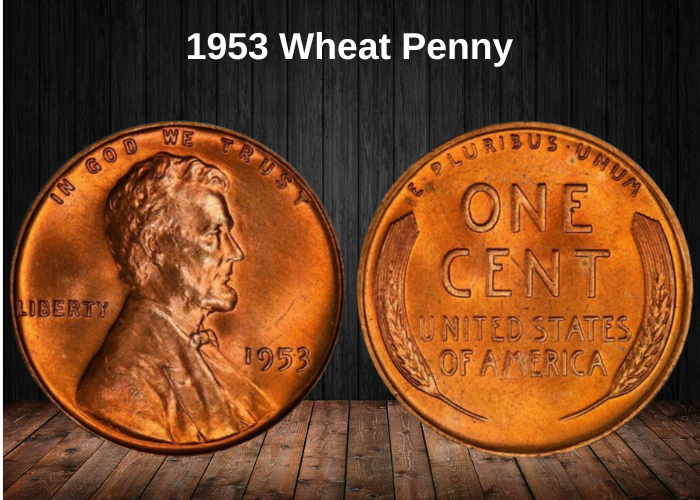
The Wheat Penny, also known as the Wheat Cent, was the first version of the Lincoln cent. It debuted in 1909 and was followed by six other designs: the Lincoln Memorial cent in 1959, four Bicentennial versions released in 2009, and the current Shield cent introduced in 2010. All seven feature Abraham Lincoln—the 16th U.S. president and the first historical figure to appear on a circulating American coin.
Origins of the Wheat Penny
The idea for redesigning the cent dates back to 1904, during the presidency of Theodore Roosevelt. Frustrated with the dull and outdated designs on U.S. coins, Roosevelt wanted American currency to reflect more artistic beauty. Many leading numismatists and artists of the era, including Augustus Saint-Gaudens and Richard Watson Gilder, supported this vision.
Saint-Gaudens and his peers had long pushed for updated coinage, and in 1891, the U.S. Mint invited ten artists to participate in a design competition. However, Chief Mint Engraver Charles Barber complicated things by imposing conditions that many artists found unacceptable. As a result, Barber ended up designing the new coins himself, now known as Barber Coinage.
Redesigning the Penny
Saint-Gaudens, a close friend of Roosevelt, was eventually hired to redesign the nation’s coins. Although battling cancer, he managed to create the $10 Eagle and $20 Double Eagle gold coins. Roosevelt also wanted him to design the new penny—especially since Saint-Gaudens had created a well-known Lincoln statue. However, the sculptor passed away in 1907 before finishing the cent.
Enter Victor David Brenner, a talented artist who had recently created a Lincoln plaque for Gorham Manufacturing. Brenner was selected to complete the penny’s design, and his depiction of Lincoln on the obverse was quickly approved.
Originally, Brenner proposed a reverse design featuring branches inspired by French silver coins. But the Mint’s director, Frank A. Leach, rejected the idea due to its European influence. Brenner then switched to a simpler, more symbolic image: two ears of durum wheat, which gave the coin its nickname—the Wheat Penny.
Impact and Popularity
While Saint-Gaudens originally envisioned using his intricate Double Eagle design for the penny, it proved too complex and expensive for mass production. The U.S. Mint preferred Brenner’s simpler and more practical design, despite some lingering tensions between the Saint-Gaudens and Barber camps—an echo of their earlier rivalry from 1891.
The Wheat Cent turned out to be a huge success. It remained in circulation for nearly 50 years, from 1909 to 1958, and was beloved for both its design and historical symbolism.
By 1952, internal discussions had begun at the Mint about replacing the wheat reverse. This sparked interest in coins minted in 1953, as collectors and insiders anticipated the change. The official decision to replace the wheat design wasn’t made until December 1958. Production of the Lincoln Memorial cent began in January 1959, with its public release following in February.
The 1953 Wheat Penny belongs to the later years of the series and is notable not just for its historical context, but also for popular minting errors like Doubled Die Obverses (DDOs) and Repunched Mint Marks (RPMs)—which we’ll cover in the next section.
Characteristics of the 1953 Wheat Penny
Understanding the parts of a coin using proper numismatic language can enhance your appreciation and analysis of it.
The front side, known as the obverse, displays Abraham Lincoln’s profile, accompanied by inscriptions like “IN GOD WE TRUST” at the top, “LIBERTY” to the left, and the minting year, possibly with a mint mark, to the right of the portrait.
The back side, or reverse, features the iconic Wheat Ears design. Two stalks of wheat frame the coin’s central inscriptions: “ONE CENT” and “UNITED STATES OF AMERICA.” Just above these, you’ll see the national motto “E PLURIBUS UNUM.”
The edge of the coin is plain, meaning it’s smooth and untextured. Encircling both faces is a slightly raised border, referred to as the rim or collar, which helps protect the coin’s design.
All raised parts on the coin, including the portrait and lettering, are called devices, while the flat background area is known as the field.
Before a coin is struck with its design, the blank metal disc is referred to as a planchet.
This terminology is essential for accurately describing the physical features and design elements of coins like the 1953 Wheat Penny.
The Obverse of the 1953 Wheat Penny
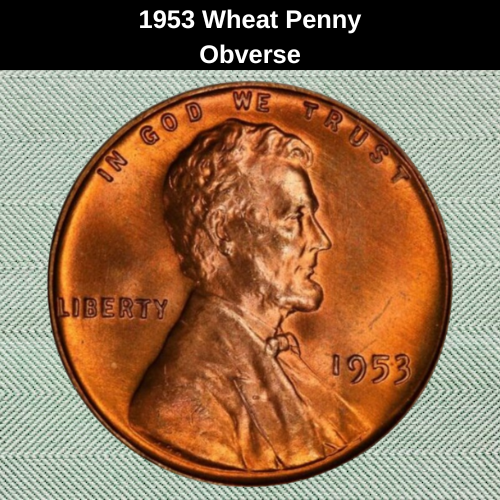
The obverse features a right-facing portrait of Abraham Lincoln. Above his head appears the motto “IN GOD WE TRUST.” To the left of the portrait is the word “LIBERTY,” while the date and, if applicable, the mint mark are positioned to the right. Just beneath Lincoln’s shoulder, you’ll notice the initials “VDB,” representing the coin’s designer, Victor David Brenner.
The Reverse of the 1953 Wheat Penny
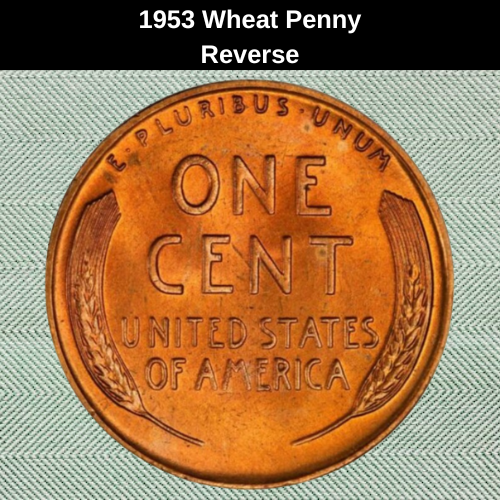
The reverse displays two ears of durum wheat curving along each side, enclosing the inscriptions at the center. At the top, nestled between the tips of the wheat stalks, appears the Latin motto “E PLURIBUS UNUM.” Beneath it is the coin’s denomination, “ONE CENT,” followed by the issuing country, “UNITED STATES OF AMERICA.”
Additional Characteristics of the 1953 Wheat Penny
This coin was composed of 95% copper and a 5% mixture of zinc and/or tin. It measured 19.05 millimeters across and had a standard weight of 3.11 grams. The edge of the coin is smooth (plain), lacking any reeding. Depending on its condition and exposure, its color can appear red, red-brown, or brown.
Here’s a rephrased version of that section:
Grading the 1953 Wheat Penny
Pre-1982 pennies, particularly those made before 1959, are primarily made of copper, with their vivid copper color being categorized as Red (RD) for the brightest examples, Red-Brown (RB) for those in between, and Brown (BN or BRN) for the most worn ones. However, these color categories don’t correspond to actual coin grades. Like all U.S. coins, pennies are graded on the Sheldon Scale, which ranges from 1 to 70.
Here’s a guide to the Sheldon Scale:
| Grade | Description |
|---|---|
| 1 | Basal State-1 |
| 2 | Fair |
| 3 | Very Fair |
| 4, 5, 6 | Good |
| 7, 8, 10 | Very Good |
| 12, 15 | Fine |
| 20, 30 | Very Fine |
| 40 | Extremely Fine |
| 50 | About Uncirculated |
| 60 | Mint State |
| 65 | Mint State |
| 70 | Mint State |
Refer to these guides to better understand your coin’s grade and determine its exact value.
1953 Wheat Penny Value Guides
In 1953, proof pennies were still being produced at the Philadelphia Mint. A proof coin is a special collectible made using specialized dies and techniques, designed for collectors. On the other hand, coins intended for general circulation are referred to as business strikes or regular strikes. The minting location plays a significant role in determining the value of a coin. In 1953, Wheat Cents were minted in Philadelphia, Denver, and San Francisco, each affecting the coin’s rarity and value.
1953-D Wheat Penny Value
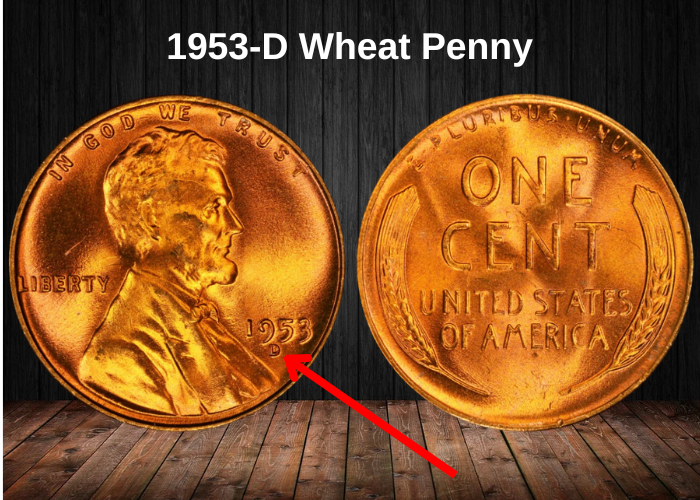
The Denver Mint produced 700,515,000 pennies in 1953, all bearing the D Mint Mark. In February 2007, a AU 58 example was sold for $920, and in August 2007, an MS 67 RD was sold for $7,475. However, by April 2025, over 80 coins in this grade have surfaced, reducing their value to approximately $800. Interestingly, only about ten coins have been graded as MS 67+ RD, and these are now valued at around $6,750.
This shows how a coin’s rarity can fluctuate based on the number of examples in higher grades.
1953-S Wheat Penny Value
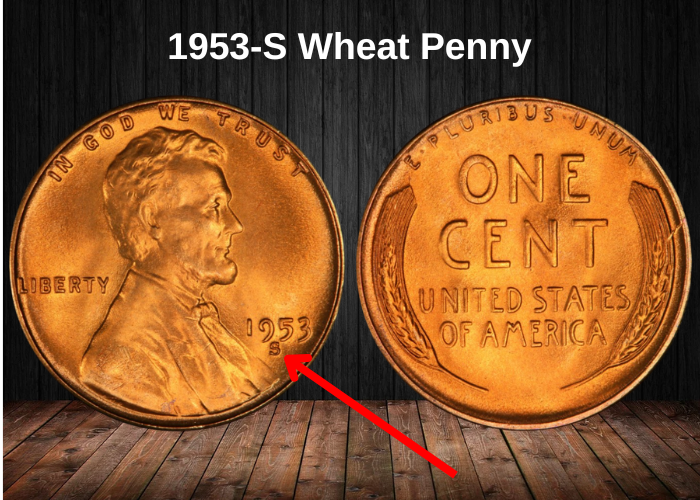
The San Francisco Mint produced 181,835,000 pennies for circulation in 1953, all featuring the S Mint Mark. On February 23, 2014, an MS 67+ RD was sold for $3,410. However, by April 2025, nearly 40 examples of this grade have been graded, causing the value to drop to around $1,300. Interestingly, a single MS 68 RD Wheat Penny has surfaced, with an estimated value of $19,500 in 2025.
This demonstrates how the discovery of higher-grade examples can dramatically influence the value of a coin.
1953 No Mint Mark Wheat Penny Value
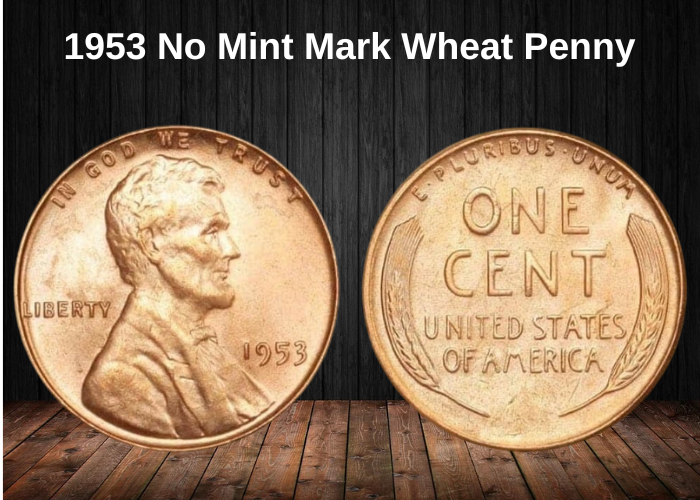
In 1953, the Philadelphia Mint produced 256,755,000 pennies for circulation. On November 2, 2005, an MS 60 BN (Brown) sold for $1,495. Later, on January 8, 2014, an MS 67 RD (Red) was sold for an impressive $14,100. By April 2025, PCGS had graded around 100 coins as MS 67 RD, causing the value to settle at about $3,750. However, only five coins have been graded MS 67+ RD, and these are estimated to be worth $16,000 due to their rarity and condition.
1953 (P) Proof No Mint Mark Wheat Penny Value
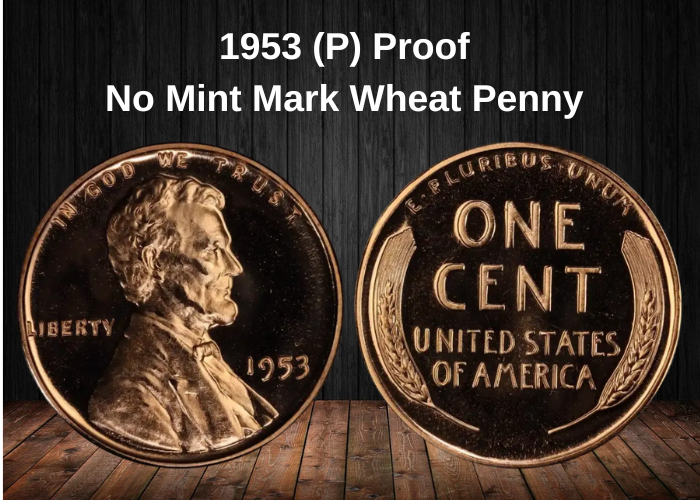
The Lincoln Penny series, while renowned for its beauty, faced several challenges due to its curvy relief designs. This led the U.S. Mint to experiment with different techniques to improve the production of Proof Coins. In the early years, they adopted a sandblasted matte finish, influenced by French coin design methods. However, by 1917, the Mint stopped producing Proof Pennies altogether until 1936. By then, they had refined their process to create mirror-like proofs using burnished blanks and specialized proof dies.
The proof blanks were pre-treated by tumbling them with stainless steel beads for a high shine. Additionally, the proof dies were pickled in acid and scrubbed with horsehair to enhance contrast. The first 50 to 100 coins struck from these dies displayed the most dramatic differences in appearance, which led to the creation of categories such as Deep Cameo (DCAM) and Ultra Cameo.
In 1953, the Philadelphia Mint produced 128,800 proof pennies without mint marks. As of 2025, here are the values for some of the highest-graded Proof Pennies from that year:
- PR 69 RD: This perfect grade coin sold for $7,475 in January 2006. It is now worth around $5,500 with only three known specimens.
- PR 68 CAM: In 2019, a PR 68 CAM sold for $5,900 on eBay. In 2025, these coins are valued at approximately $3,500, with nine known coins.
- PR 67 DCAM: A PR 67 DCAM sold for $10,869 in September 2021, but its current value in 2025 is around $4,000.
The rarity and high quality of these proofs make them highly valuable for collectors, especially those with higher grades and specific classifications like DCAM.
Rare 1953 Wheat Penny Errors List
Coin errors are often highly sought after by collectors due to their rarity and potential value. These errors are typically identified soon after the coin is released and are designated as First Strike Errors (FS Errors). They are assigned FS Numbers to help identify them among other coins.
For the 1953 Wheat Penny, some of the most notable errors are FS-501, FS-502, and FS-101. These errors involve RPMs (Repunched Mint Marks) and a DDO (Doubled Die Obverse), each of which can significantly increase the coin’s value. Let’s break down these key errors:
1953 (P) Proof Penny DDO
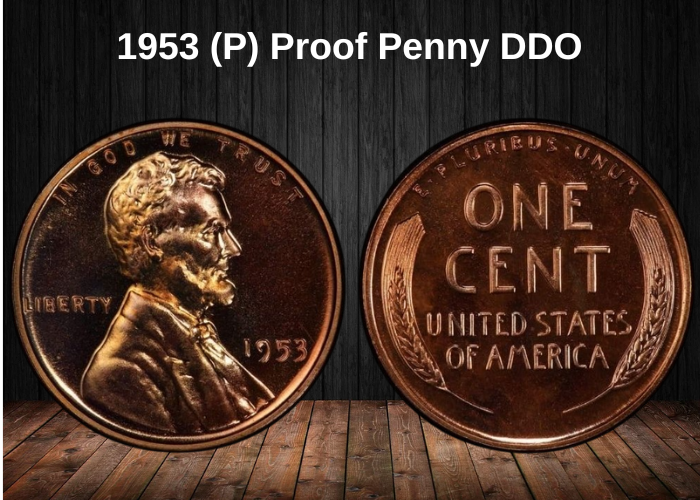
The DDO (Doubled Die Obverse) error, sometimes called hub doubling, occurs when the die used to strike the coins shifts slightly between hub strikes. This misalignment causes the design elements to be doubled, creating a noticeable doubling effect on the coin’s features. Since the error is on the die, every coin struck by that die will carry the same flaw.
In the case of the 1953 (P) Proof DDO, you can spot the doubling on the “19” in the year 1953, where the digits will appear slightly shifted or doubled. This type of error can significantly increase the value of a coin, especially if it’s in a high-grade condition.
Notable Sales of 1953 (P) Proof DDO Coins:
- A PR 68 BN (Brilliant Nickel) with this DDO error sold for $1,880 in 2014.
- A PR 68 CAM (Cameo) sold for $3,692 on eBay in 2018.
These sales show how much collectors value the 1953 Proof DDO coins, particularly when they are in high-grade conditions like PR 68. The Cameo finish (CAM) typically brings in a higher price due to the contrast between the frosted design and the mirrored background, which enhances the visual appeal of the coin.
1953-D/D Penny RPM
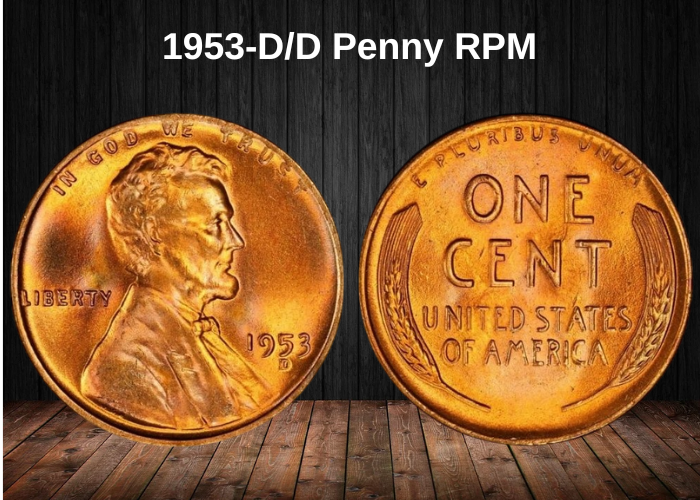
RPM (Re-punched Mint Mark) occurs when the mint mark on a coin is punched more than once during the die-making process. In the past, mint marks were applied manually to the dies, usually as the last step. Sometimes, to ensure clarity, the mint mark was re-punched. If the second punch wasn’t perfectly aligned, you could see traces of the first punch, which creates the RPM error.
For the 1953-D/D penny, the mint mark “D” is re-punched, and you can observe the remnants of the first mint mark beneath the second. This is a highly collectible error and can significantly increase the coin’s value depending on its grade.
Notable Sale of 1953-D/D RPM Coin:
- A 1953-D/D MS 67 RD (Red) coin with the RPM error sold for $3,525 in January 2020.
The MS 67 RD grade is quite high, indicating the coin is in excellent condition, and this rarity has contributed to the coin’s impressive sale price. Collectors value these RPM coins for their unique and historical errors, which make them highly sought after in the numismatic world.
1953-S/S Penny RPM

The 1953-S/S RPM error is another example of a re-punched mint mark found on certain coins. Just like the 1953-D/D RPM error, the 1953-S/S error occurs when the mint mark (in this case, “S”) is punched more than once, with the second punch slightly misaligned, leaving traces of the first mint mark beneath it. This creates the S/S RPM.
Key Details:
- RPM Writing: “S/S” is used to indicate a re-punched mint mark, with the “S” mint mark being punched twice, and the second one creating a slight shift that reveals remnants of the first mint mark.
- Variant: This 1953-S/S RPM was discovered later and is categorized as another first-strike error, adding to the intrigue and value of the coin.
Notable Sale:
- An MS 64 RD graded 1953-S/S RPM was sold for approximately $85. While it is more affordable compared to higher-grade errors, this price still reflects the interest collectors have in unique minting flaws.
The discovery of RPMs, like the 1953-S/S, adds an exciting layer of rarity and value to the coin, making it a desirable piece for numismatists and collectors who are keen on mint errors.
1953-D Penny BIE Error
The 1953-D BIE Error is a type of die break or cud error that occurs between the B and E in Liberty on the obverse of the coin. This die flaw results in a small, raised area that looks like an extra “I” between the B and E, leading to the nickname BIE error.
Key Details:
- Cause: BIE errors happen when there’s a die break or cud, which is a part of the die that becomes damaged, causing a raised area that forms a visible deformation in the design.
- Appearance: The flaw appears as an extra line or bump between the B and E, making it look like a misplaced “I”.
- Value: While these errors are recognized by collectors, they are generally not considered very valuable. In the case of the 1953-D BIE error, an MS 63 RD coin sold for around $15.
Though not a high-value error, the BIE error is still an interesting variety for collectors who enjoy spotting unique die flaws on wheat pennies.
1953 Penny Off-Center Error
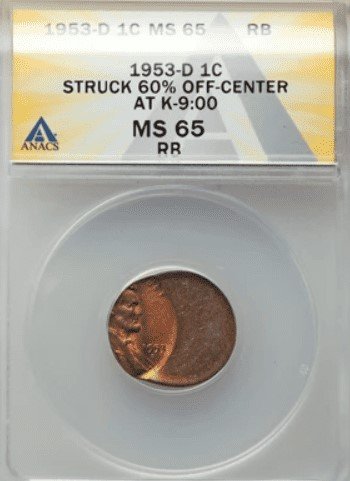
An off-center error occurs when the blank (or planchet) is not properly aligned in the striking machine, causing the dies to strike it off-center. As a result, part of the coin’s design will be missing, and this is often referred to as a misalignment.
Key Points:
- Cause: The dies hit the blank at the same time, but if the blank is slightly off-center, the design won’t strike completely, leaving part of the coin unmarked.
- Description: Off-center errors are often described in percentages, representing how far off the design is from the center. For example, a 70% off-center means that 70% of the coin is struck, and the remaining 30% is missing or unmarked.
- Value:
- An ungraded off-center error can generally fetch about $30.
- MS 64 RD examples with a 70% off-center error were sold for as much as $505 in 2019.
These coins are attractive to collectors because of their unique appearance, especially when the misalignment is significant, making them stand out as unusual and rare finds.
Where to sell your penny?
Now that you know the value of your penny, you might be wondering where to sell it. Don’t worry: here’s a guide to some of the best online platforms where you can easily sell your coins, along with their advantages and disadvantages.
Discover the best platforms for selling coins online (pros and cons).
1953 Wheat Penny FAQ
1. Why is the 1953 Wheat Penny significant in U.S. coinage history?
The 1953 Wheat Penny is significant because it marks one of the final years of the Wheat reverse design, which had been used on U.S. pennies since 1909. In 1959, the U.S. Mint transitioned to the Lincoln Memorial reverse design, marking the end of the Wheat series. As a result, the 1953 penny is part of the final group of Wheat pennies and is historically important for collectors.
2. What is the metal composition of the 1953 Wheat Penny?
The 1953 Wheat Penny is made of:
- 95% copper
- 5% zinc
This was the standard composition used for U.S. pennies from 1909 to 1942 and then again from 1944 to 1958, before the U.S. Mint switched to a copper-plated zinc alloy in the 1960s.
3. How many 1953 Wheat Pennies were minted?
The 1953 Wheat Penny had a large mintage:
- Philadelphia (no mintmark): 1,065,472,000
- Denver (D): 133,415,000
- San Francisco (S): 54,012,000
With a total mintage of over 1.25 billion pennies, the 1953 Wheat Penny is relatively common compared to other years in the Wheat series. However, certain high-grade or error coins can still have significant value.
4. What is the value of a 1953 Wheat Penny today?
The value of a 1953 Wheat Penny varies depending on its condition:
- Circulated coins: Typically worth around $0.05 to $0.25.
- Uncirculated coins: Coins graded MS-63 or MS-64 can be worth $1 to $10.
- High-grade coins (MS-65 or higher) can be worth $15 to $30. Coins graded MS-66 or better can fetch prices in the $40 to $60 range, depending on their luster and condition.
While the mintage is high, coins in pristine condition or with rare errors are more valuable.
5. Are there any notable error varieties in the 1953 Wheat Penny?
Yes, there are several notable error varieties for the 1953 Wheat Penny:
- Double Die Obverse (DDO): Some 1953 pennies feature a doubled die on the obverse, especially noticeable in the “LIBERTY” and “IN GOD WE TRUST” inscriptions. These coins are highly collectible and more valuable than regular coins.
- Off-center Strikes: Some 1953 pennies were struck off-center, causing part of the coin’s design to be missing or misaligned.
- Die Cracks and Cuds: Some coins show die cracks or cud marks caused by damage to the die used in striking the coin. These errors can make the coins more interesting and valuable to error coin collectors.
Coins with these errors typically sell for a premium, especially in higher grades.
6. How does the 1953 Wheat Penny compare to other years in the Wheat series?
The 1953 Wheat Penny is very similar to other early 1950s pennies, but it is historically significant because it is one of the last coins in the Wheat reverse design series.
- 1953 marks the penultimate year of the Wheat reverse before the Mint switched to the Lincoln Memorial reverse design in 1959. This gives the 1953 penny extra value for collectors of this series, especially those interested in end-of-issue coins.
- The 1951, 1952, and 1953 pennies are the last few in the series, and they often hold more historical significance than earlier years due to their place in the transition to the new design.
Compared to earlier years in the series, the 1953 penny is a bit more common, but it is still valued by collectors who focus on high-grade specimens and those seeking the last issues before the design change.
7. How can I identify a high-grade 1953 Wheat Penny?
To identify a high-grade 1953 Wheat Penny, collectors should look for:
- Sharp details: The wheat stalks, Lincoln’s portrait, and inscriptions (“LIBERTY” and “IN GOD WE TRUST”) should be clear and sharp, with no visible wear.
- Minimal wear: A high-grade coin will show no wear on key features like Lincoln’s cheek, wheat heads, and the rims. The coin should appear fresh, as if it has never been in circulation.
- Clean surfaces: The coin should have smooth surfaces, free from scratches, abrasions, or toning that could diminish its appeal. No marks should be present to distract from the coin’s design.
- Luster: A high-grade uncirculated coin should retain its luster—a shiny, reflective surface. If the coin has lost its luster, it might still be valuable but will likely fall into a lower grade.
Coins graded MS-65 or higher will show sharp, clean details with no noticeable wear or marks, and they are highly sought after by collectors.



















































